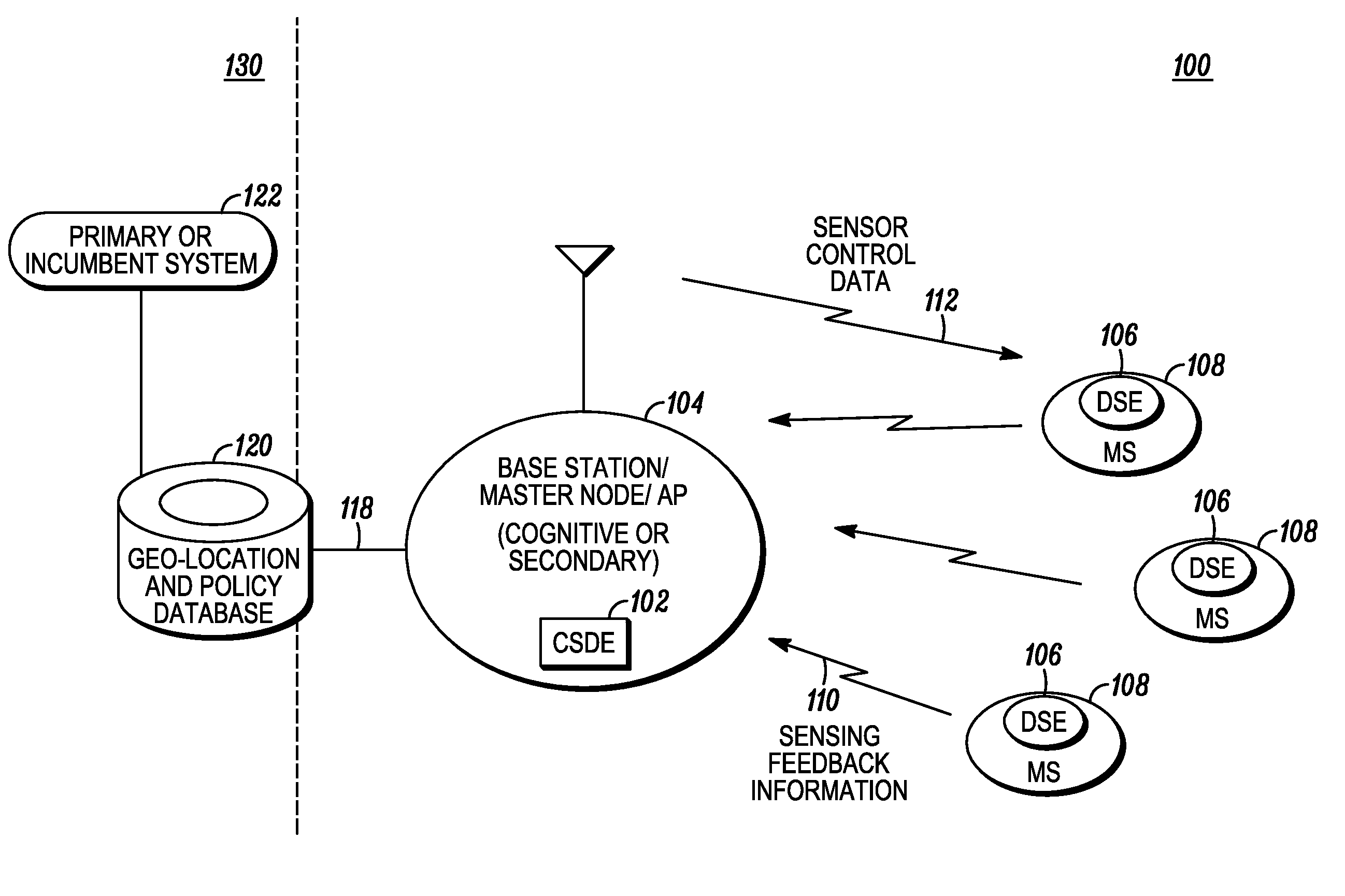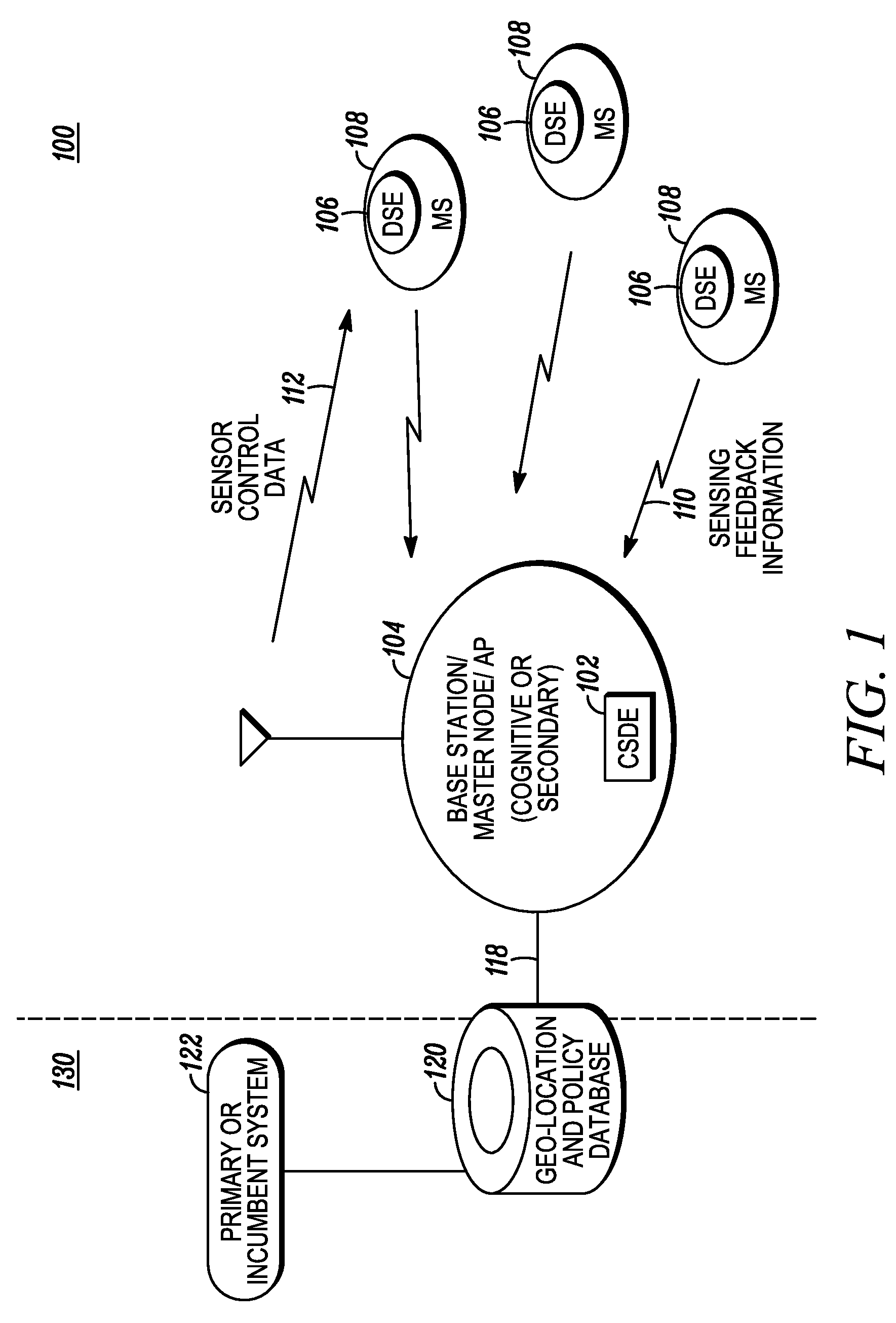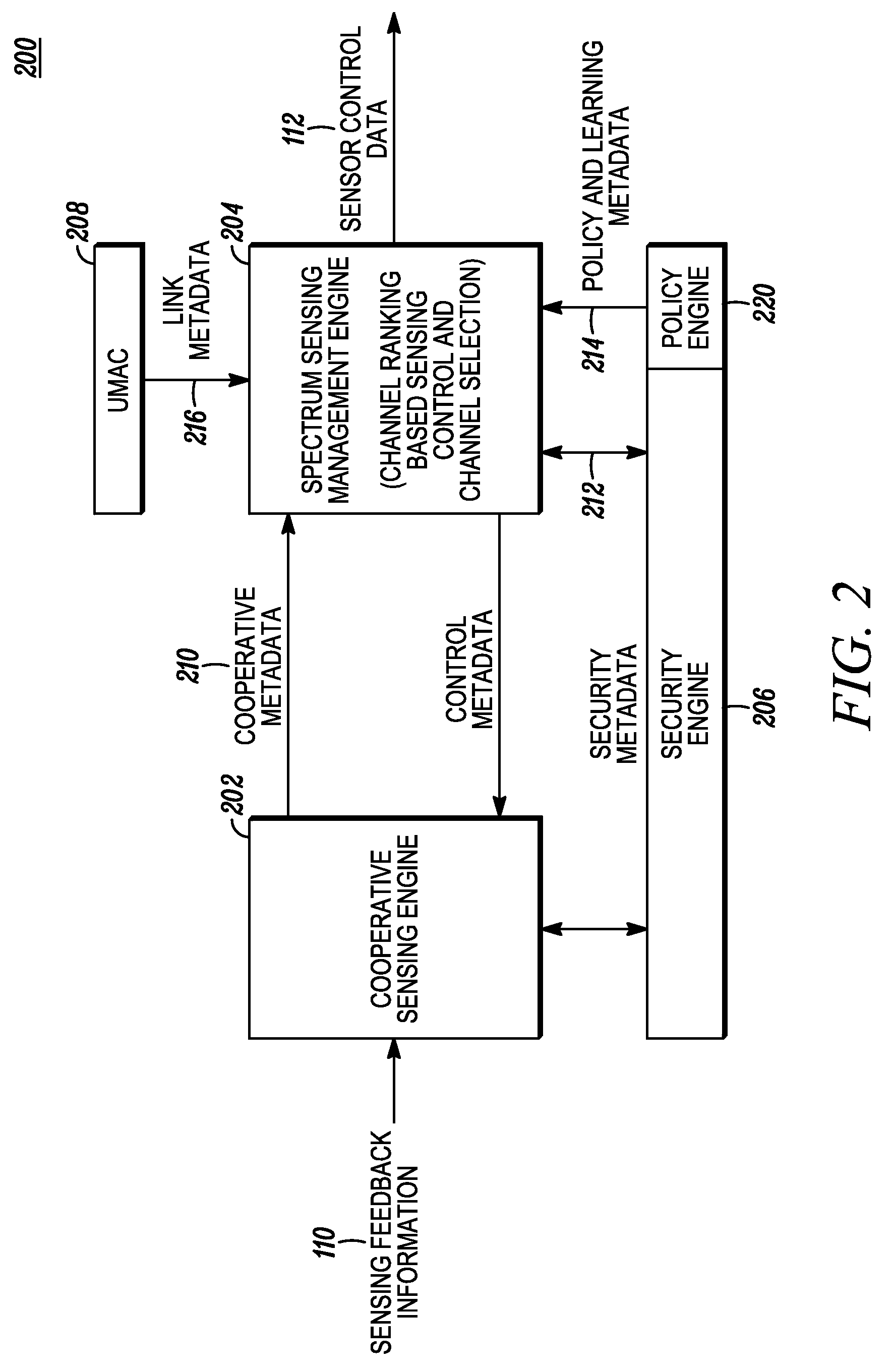Method and apparatus for distributed sensing management and control within a cognitive radio network
a distributed sensing and cognitive radio technology, applied in the field of communication systems, can solve the problems of inability to obtain all the required information reliably, at all times, and the inability of single sensor to achieve the required information
- Summary
- Abstract
- Description
- Claims
- Application Information
AI Technical Summary
Benefits of technology
Problems solved by technology
Method used
Image
Examples
Embodiment Construction
[0016]Before describing in detail embodiments that are in accordance with the present invention, it should be observed that the embodiments reside primarily in combinations of method steps and apparatus components related spectrum sensing management and control techniques.
[0017]The spectrum sensing management and control technique of the present invention provides control and secondary channel selection based on distributed spectrum sensing with and without a dedicated sensing RF front end, using an over-the-air sensing control interface, in-band and out-of-band sensing, master-slave sensing nodes and secondary channel ranking techniques. Spectrum sensing management, provided in accordance with the various embodiments to be described herein, is implemented within a cognitive system to efficiently and intelligently control and obtain spectrum sensing data from radio sensors under cognitive radio control.
[0018]For the purposes of this application certain acronyms, abbreviations and de...
PUM
 Login to View More
Login to View More Abstract
Description
Claims
Application Information
 Login to View More
Login to View More - R&D
- Intellectual Property
- Life Sciences
- Materials
- Tech Scout
- Unparalleled Data Quality
- Higher Quality Content
- 60% Fewer Hallucinations
Browse by: Latest US Patents, China's latest patents, Technical Efficacy Thesaurus, Application Domain, Technology Topic, Popular Technical Reports.
© 2025 PatSnap. All rights reserved.Legal|Privacy policy|Modern Slavery Act Transparency Statement|Sitemap|About US| Contact US: help@patsnap.com



